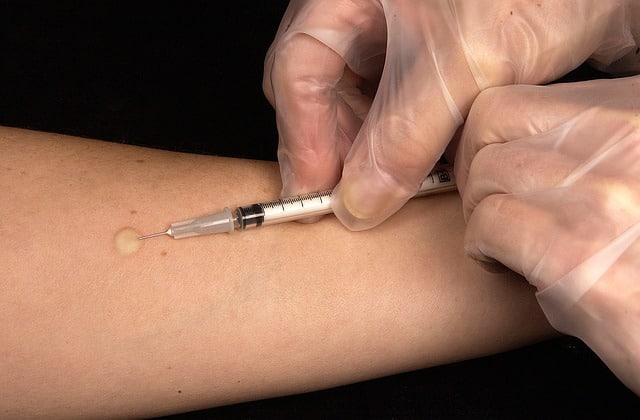
The parenteral route makes it possible to deliver drugs without the patient having to ingest them.
The adjective parenteral comes from the Greek language: para- and énteron (which translates as “intestine” ). The term is used in the field of medicine to refer to what is introduced into the body through a route other than the digestive route .
The intramuscular route , the subcutaneous route , the intra-arterial route and the intravenous route , therefore, are parenteral. These mechanisms allow the delivery of drugs without them being ingested by the patient.
It is important to mention that there are other routes of drug administration that are not digestive but are not considered parenteral, such as the topical route or the respiratory route . Therefore, in practice, the route that involves the use of a needle to break the barrier and allow the drug to enter the systemic circulation is called parenteral.
Advantages and disadvantages of the parenteral route
The parenteral route has advantages and disadvantages. Typically, the drug reaches the circulation directly, saving time and achieving great efficacy. On the other hand, this method of administration is used to medicate people who are unconscious or who, for other reasons, cannot use the oral route.
As negative aspects, it can be mentioned that the parenteral route usually requires a qualified specialist for its application, in addition to the need for sterile instruments. The parenteral route also increases the risk of local infections and, if it generates an adverse reaction, its intensity is greater compared to other methodologies.
It is important to keep in mind that the appeal to the parenteral route must be decided by a health professional . Only an expert can analyze the risks and benefits and decide based on each individual condition.

The parenteral route requires the use of a needle that breaks the barrier and allows the entry of a substance into the systemic circulation.
A type of nutrition
In the health context, a large number of hospital patients require the application of nutritional support because they are not able to satisfy their needs orally, either for a limited period of time or due to a permanent condition. In this case we can talk about the concept of standardized parenteral nutrition , which is opposed to enteral nutrition .
For those patients who have an absolutely functional gastrointestinal tract, enteral nutrition is preferred, since it brings certain benefits to hospital centers, such as the length of stay is reduced and the risk of complications due to infection is much lower.
However, when there are physical alterations in the gastrointestinal tract or other problems that generate intolerance to this access route in the patient, parenteral nutrition becomes necessary. Below we will see in detail the conditions that must be met to make this decision, in accordance with what is established by the American Society for Parenteral and Enteral Nutrition ( ASPEN ):
* the patient has correct nutrition, but has not been able to satisfy 50% of his or her nutritional needs in the last week through the oral or enteral route;
* the patient has a nutritional risk and has not met his nutritional requirements for between three and five days;
* the patient suffers from malnutrition. In this case, parenteral nutrition should be applied immediately if other routes are contraindicated or if they cannot meet their energy demands.
The vision of the European Society for Parenteral and Enteral Nutrition
The European Society for Parenteral and Enteral Nutrition ( ESPEN ), for its part, advises resorting to parenteral nutrition to treat those patients whose situation is critical and for whom it is believed that enteral nutrition cannot be started until after the first three days. in the clinic.
Parenteral nutrition exists in several modalities. Individualized nutrition, for example, consists of providing the macronutrients (carbohydrates, lipids and proteins) and micronutrients (minerals, vitamins, trace elements and electrolytes) that the body needs to meet energy and nutrient demands in a single mixture.
